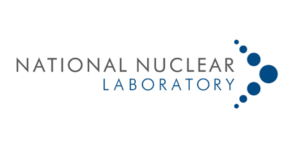Sunday 25 May 2014
NNL featured in NBC International
The following article was published in the January 2009 edition of NBC International – the world’s only CBRN (Chemical, Biological, Radiological and Nuclear) monthly publication. It is reproduced here with permission from.
NNL Sales Manager, Mark Sharpe explains how the UK NNL is bringing nuclear expertise and radiological facilities to CBRN defence.
NBCI: Please relate the background to the setting up of the National Nuclear Laboratory.
MS: With the demise of BNFL, the establishment of the UK National Nuclear Laboratory safeguards key nuclear expertise and offers a truly commercial approach to solving radiological and nuclear CBRN challenges. In 2004 the UK Government published the Energy Act 2004, which documented wholesale changes to the UK nuclear industry.
These included the establishment of the Nuclear Decommissioning Authority, the NDA, changes to future management of the UK nuclear decommissioning liability, the gradual transfer of assets, closure of BNFL and the restructuring of UKAEA. From autumn 2008, BNFL became a small holding company with little or no staff. Nexia Solutions, a wholly owned BNFL subsidiary with approximately 700 staff, has been given the go ahead by Government to establish a National Nuclear Laboratory for the UK.
I understand that this promising development has been as a result of a decline in nuclear R&D. But now nuclear energy looks like making a comeback.
Yes, indeed. In parallel with the Energy Act changes but over a much longer time frame, general civil nuclear research and development has seen a dramatic decline. The establishment of the NNL follows the UK Government’s announcement of its intention to allow opportunities for new nuclear build to form a key component of the UK’s national security of energy supply.
Please describe the historical background of the National Nuclear Laboratory.
The roots of the NNL were established in 1996 when BNFL created an integrated research and technology services business to consolidate a number of disparate and relatively insular R&D departments. The Lab has been built on a lengthy and successful track record in nuclear research and development as part of the BNFL Group. The Government first announced its intention to establish an NNL based around Nexia Solutions in autumn 2006 with the facilities owned by the NDA.
Nexia Solutions Ltd was established as a stand-alone company out of the former Research & Technology Division of BNFL. It also encompassed the R&T activities of the former Magnox Electric and acquired the Nuclear Science business of AEA(T) in 2003. The lab will continue to identify, safeguard and enhance key nuclear scientific skills and operate world-lass facilities.
What research facilities does it provide?
The NNL is a unique resource constituting the bulk of the UK’s remaining national nuclear research capability and all of the active civil research facilities. The lab provides specialist technical and consulting services and integrated nuclear laboratory services to commercial and government customers.
The NNL is envisaged as a central hub focused on the Central Laboratory at Sellafield and working closely with other organisations to lever investment and knowledge and support the technical needs of the nuclear industry and the nation.
The Lab itself provides an extensive range of technology services and solutions based on its powerful combination of knowledge, experience and unique facilities.
With Government formally committed to the NNL, the competition to appoint a Managing Contractor to operate the Lab has commenced. The process will be run by the Shareholder Executive.
Once appointed, the contractor will play a key role in ensuring the NNL makes best use of its skills and facilities to support both decommissioning and wider research and technology work.The NNL will lead and integrate strategic nuclear technology programmes and offer commercial technologies for customers. It will be the repository of trusted technical advice and enable Government to positively influence the development of a safe, secure and environmentally responsible nuclear industry.
And, of prime importance to our readers, what does the NNL have to offer CBRN defence?
As well as providing ongoing support to traditional civil nuclear customers, NNL is keen to exploit technologies and skills in other markets, particularly for the wider benefit of UK plc. Already having a strong heritage in the traditional defence sector with long term support to the UK MoD naval programme, there are obvious synergies with CBRN defence. Building on advice and services previously provided by BNFL to UK Government, our work in the CBRN defence area utilises skills from across the NNL, complemented by dedicated resources for homeland security and non-proliferation.
The NNL maintains skills on behalf of the UK covering all aspects of the nuclear fuel cycle. Typically these resource are engaged in supporting the nuclear industry, whether these be enrichment and fuel manufacture; reactor design and operations; fuel management (including reprocessing and waste disposal); and all aspects of maintaining safe operations associated with nuclear facilities either in design, operation or decommissioning.
A key driver for the NNL is the application of our existing capability into non-routine environments, or applications. A good example being the routine decontamination of our facilities to maintain access and availability for use; and the application of this knowledge into non-routine environments or challenges, e.g. assessment of decontamination methods and the suitability for urban applications.
In effect the NNL gives direct access to world-class nuclear R&D facilities for experimentation, testing, simulation, modelling, assay and recycling. These facilities are located throughout the UK both on and off nuclear licensed sites. NNL are already engaged in this important area for UK security, working alongside UK Government departments and other organisations to provide a major contribution to enhance CBRN Defence.

